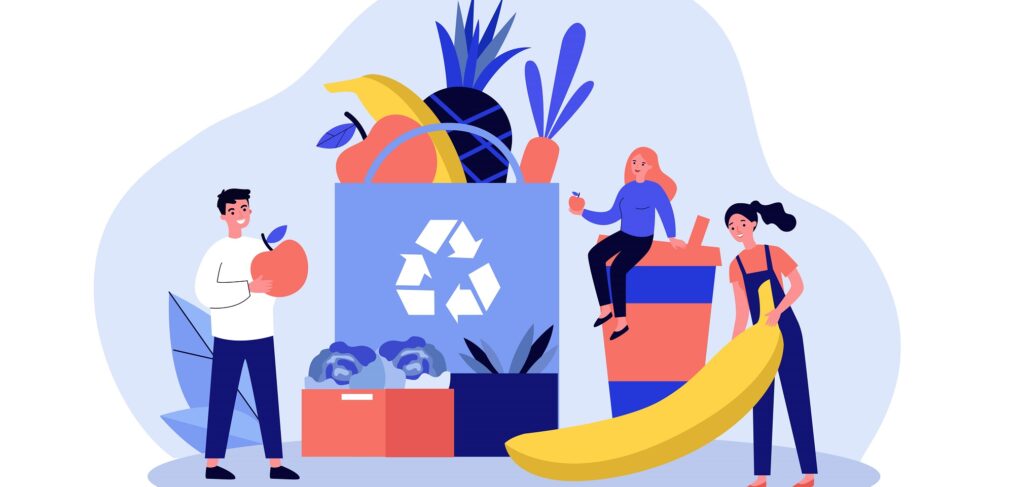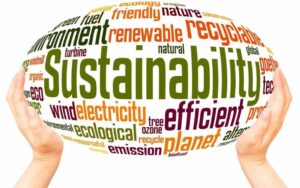
Sustainable Food & Packaging – The New Norm!
The Covid-19 pandemic continues to shape and shift consumption and lifestyle behaviours. A recent study across 24 countries revealed 58% of adults are more mindful of their impact on the environment, and 62% said it is now more important than before that companies behave in a more sustainable and eco-friendly way.[i] The sustainable trend is no more evident than in the food and beverage sector in which it is estimated:
- The global food system is responsible for 26% of greenhouse gas emissions.[ii]
- If as a planet, we stopped wasting food altogether, we would eliminate 8% of our total emissions.[iii]
- The global carbon footprint of plastics has doubled since 1995. They represent 4.5% of global greenhouse gas emissions, [iv] and as a nation, Canada recycles just 9% of its plastics.[v]
Sustainability has been identified by Kerry, Global Taste and Nutrition Company as one of their top food and beverage trends for 2022. They recently revealed, globally, that 49% of consumers now consider sustainability when purchasing food and beverage products.[vi]

Sustainability
“Sustainability means meeting our own needs without compromising the ability of future generations to meet their own needs. In addition to natural resources, we also need social and economic resources. Sustainability is not just environmentalism. Embedded in most definitions of sustainability we also find concerns for social equity and economic development”.[vii]
Interest in sustainability comes down to generation. The younger generation, in particular, Millennials and Generation Z are more attuned to environmental issues. It is a big influence on purchasing decisions for Gen Z. So exactly, what does sustainability mean to consumers:
- To make sure I am buying healthier products.
- To leave a better planet for future generations.
- To reduce my personal environmental footprint.[viii]
First Insight recently completed a survey to gauge consumers’ attitudes towards sustainability. As part of their findings:
- 68% of consumers are willing to pay more for sustainable products.
- Why they prefer sustainable products:
- 17% – Improve the environment.
- 16% – social signaling.
- 11% – reduce carbon footprint.
- 9% – reduce production waste.
- 8% – animal welfare.[ix]
In a similar study undertaken by the Boston Consulting Group, they revealed:
- 74% of consumers are willing to pay more for sustainable packaging.
- Nearly half of consumers shy away from packaging that could harm the environment, and 68% of those consumers associate plastic with ocean pollution.[x]
Businesses are now improvising with new ways of designing and packaging their products, attempting to lessen their carbon and environmental footprint. Three such examples:
- Cornstarch Packaging: Cornstarch is an organic material that is derived from the corn or maize plant, it has plastic-like properties.
- Mushroom Packaging: Eco-friendly packaging made from mushrooms. It uses cleaned and ground agricultural waste, which is then fused together by a matrix of mushroom roots, otherwise known as mycelium.
- Seaweed Packaging: From corn to mushrooms to seaweed, the gelatinous substance agar, which is found in a variety of seaweeds and algae, is already used in several applications.
Businesses are also improvising new ways through the food ingredients they utilize in their manufacturing process. Last month we introduced consumers to the UpCycled Food Association. Since their conception, 190+ businesses have become Upcycled certified and are diverting 700 million pounds of waste yearly from landfills.[xi]
For brands to capitalize on sustainability trends, the brand must understand who their ideal consumer is and what matters most to them. And as noted by Mr. David Allen – Pepsico’s North American VP of Sustainability,
“Not surprisingly, consumers are very much aware of sustainability efforts, goals, and challenges. They want to be part of the solution, but also want those actions to be clear, simple, and engaging.”
Sustainability is the new norm. According to the 2021 Sustainable Market Share Index,
- Sustainably sourced products accounted for 16.1% of the market share in 2019, up from 13.7% four years prior.[xii]
and
According to Harvard Business Review,
- Sustainably marketed products across CPG categories have been growing between 5 and 6x faster than their more conventional counterparts.[xiii]
References:
[i] Consumer Passion for the Environment Grows as a Result of the Pandemic, www.mastercard.com, April 2021
[ii] The Challenges of Sustainable Food Packaging, www.tetrapak.com
[iii] How Cutting Your Food Waste Can Help the Climate, www.bbc.com. February 2020
[iv] Growing Carbon Footprint for Plastics, www.sciencedaily.com, December 2021
[v] Canada Recycles Just 9 Per Cent of it’s Plastics, www.rco.on.ca
[vi] Kerry Identifies 2022 Food and Beverage Trends, www.canadiangrocer.com, January 2022
[vii] What is Sustainability, www.mcgill.ca
[viii] Who are Sustainable Consumers and What Do They Actually Care About? www.moonshotcollaboratve.com January 2022
[ix] Consumer Interest in Sustainability Higher Than Retailers Believe, www.foodbusinessnews.com, January 2022
[x] Go Nature. Go Carton. www.tetrapak.com
[xii] Pepsico Foods VP of Sustainability: Consumers Want to be Part of the Solution, www.foodnavigator-usa.com, October 2021
[xiii] Research: Actually, Consumers Do Buy Sustainable Products, www.moonshotcollaborative.com, November 2020





